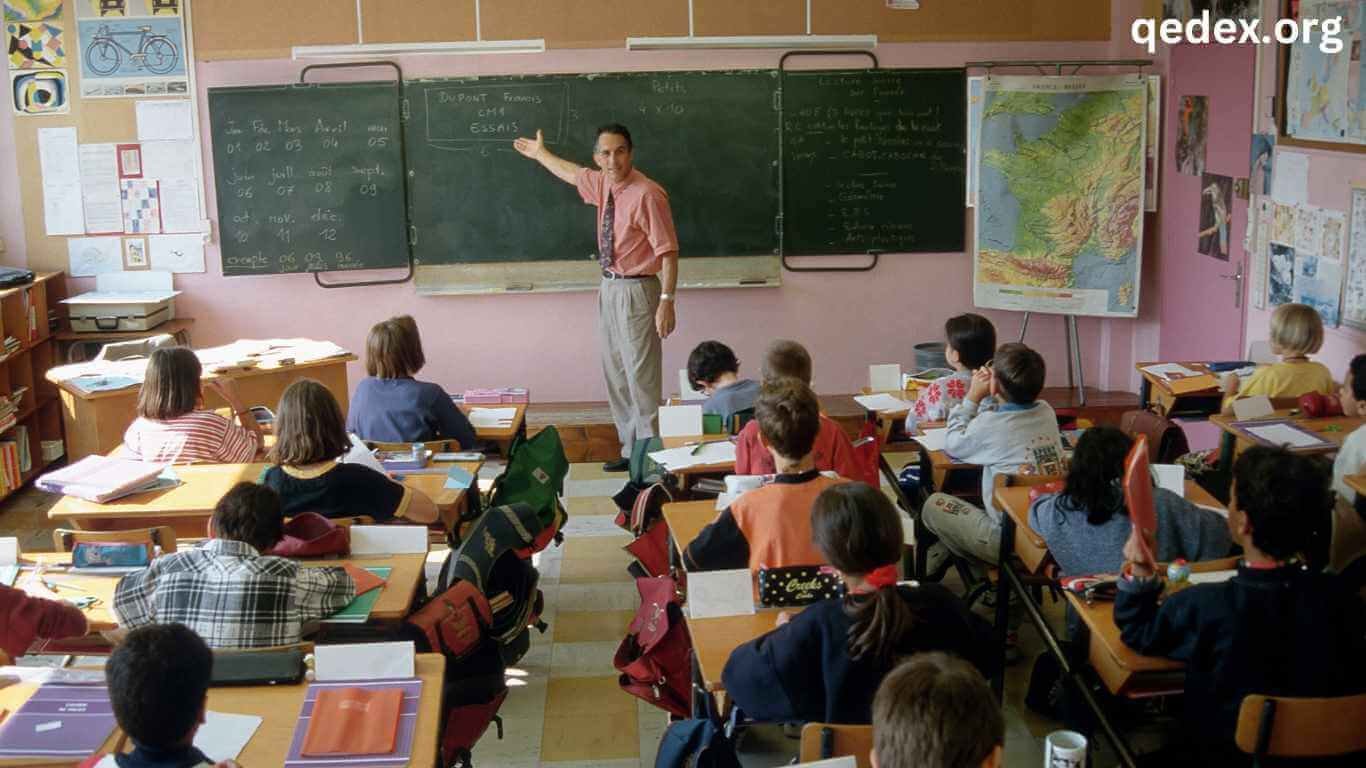What Is Teaching? Unveiling the Multifaceted Role of Educators in Modern Academia


Teaching is a profession that guides students through their educational journeys, primarily in settings like schools and universities. It involves more than just the transfer of knowledge and skills. Teachers are vital in laying the groundwork for lifelong learning and character development.
In essence, what is teaching? It is a vital role that nurtures the intellectual and personal growth of learners of all ages. This makes teaching a profound influence on both individual achievement and societal advancement.
“Most academics with advanced degrees teach, though not all. Some focus on administration or roles like research. Yet, for those who teach, it’s a vital part of our professional lives.”
Exploring the Essence of Teaching: Roles, Impact, and Methods
Teaching imparts knowledge, skills, and values and guides students through their educational journey. It involves not just the transfer of information but also mentoring and fostering critical thinking and personal growth.


Exploring the Diversity of Roles in Academia
Many individuals with advanced academic credentials primarily serve as classroom teachers in higher education. Yet, the educational landscape is varied, and not all scholars are involved in direct teaching. Many dedicate themselves to administrative duties or other specialized academic roles. These include managing international programs, overseeing student affairs, running libraries, developing courses, conducting outcomes assessments, handling accreditation, or engaging in full-time research. Every role plays a crucial part in supporting the broader educational goals of their institutions.
Despite this diversity in academic roles, teaching remains a central and essential activity for most academics, whether they teach full-time or part-time. It forms a fundamental part of their professional lives, shaping not just their careers but also impacting the development and growth of their students.
The Universal Aspiration for Excellence in Teaching
Most academics take their roles seriously and strive for excellence, especially in teaching. The quest for improved teaching methods is relentless because there is always room for enhancement. This commitment to better teaching reflects a deep-rooted dedication within the educational community.
Various initiatives, such as QEDEX and Teaching and Learning Centers programs, which are common in educational institutions, support this commitment. These initiatives focus on continuous professional development, ensuring educators stay at the cutting edge of pedagogical innovation and effectiveness.


Historical Shifts and Current Perspectives on Teaching
Historically, teaching skills were often developed informally through hands-on experience rather than structured training. Especially in higher education, teaching was once considered less critical than discipline-specific professional training.
However, this view has changed significantly in recent decades. It is now widely recognized that excelling in teaching demands focused attention and dedicated effort. This shift in understanding has prompted the creation of more structured professional development opportunities for educators designed to systematically improve their teaching abilities.
Debating Teaching Models in Higher Education
The ongoing debate about the most effective teaching model in higher education remains lively. The question is whether teaching should follow the structured model used in primary and secondary education, complete with detailed lesson plans and specific outcomes, or should it allow for more flexibility, encouraging exploration and intellectual curiosity.
An ideal approach may combine elements of both strategies. As teaching methods evolve with students’ increasing intellectual maturity, a blended model could offer structure while still promoting independent thinking and discovery.
The teaching model should transition as students grow from mid-teens to early twenties. Moving from a highly structured approach to one that supports more independent thought and exploration better suits the complex and developing intellectual needs of older students.


FAQS:
What is teaching?
Teaching is imparting knowledge, skills, and values to learners. It involves guiding students through educational materials and experiences to help them understand and apply information.
Who can be a teacher?
Anyone with the necessary knowledge, skills, and often specific qualifications can be a teacher. This includes formal education and training in pedagogy, subject matter expertise, and usually a certification or license for teaching in schools.
What skills are essential for teaching?
Essential teaching skills include strong communication, patience, adaptability, empathy, and a proper concepts of the subject. Effective teachers also need good organizational skills and the ability to engage diverse learners.
What are the different types of teaching methods?
Standard teaching methods include lectures, one-on-one tutoring, group discussions, project-based learning, and technology-enhanced learning. Teachers often combine several techniques to accommodate different learning styles and objectives.
How has teaching evolved with technology?
Technology has transformed teaching by introducing digital tools like educational software, online courses, and interactive multimedia. These technologies facilitate remote learning, personalized education plans, and access to many resources.
What is the difference between teaching and training?
Teaching generally refers to imparting academic knowledge and fostering intellectual growth, while training is more focused on teaching specific skills or behaviors, often related to performing particular tasks or jobs.
How do teachers assess student learning?
Teachers assess student learning through various methods such as tests, quizzes, assignments, presentations, and class participation. They also use formative assessments during the learning process to adjust teaching strategies and help students improve continuously.
What challenges do teachers face today?
Challenges include:
- Adapting to diverse learning needs.
- Integrating technology effectively.
- Managing large classrooms.
- Dealing with administrative pressures.
- Sometimes, limited resources.
Teachers also face the challenge of keeping students engaged and motivated.
Conclusion
What is teaching? It’s a dynamic profession essential to higher education, shaping students’ learning and long-term development. Educators do more than deliver knowledge; they mentor and guide, adapting to advancements in technology and pedagogy. Despite these changes, the core mission persists: to develop the minds and analytical skills of the next generation. This role underscores teachers’ profound impact on individuals and society, highlighting their commitment to deep, enduring learning.







I could not agree more with your argument on the importance of improving teaching by transitioning from merely conveying information to facilitating the learning process. As a staff member with a terminal degree and (in the recent past) adjunct instructor role, I have found challenging to invest time in professional development (for teaching) due to limited power of decision adjuncts face when teaching courses led by tenured professors. For instance, I have completed multiple professional development activities through the Center for Teaching Excellence in my institution, but often found resistance in implementing changes that relate to the teacher-student dynamics during the time I was teaching.
Really interesting, and thought-provoking read John. Particularly re. the age of students. For many years I working in HE Adult Education (aka Lifelong Learning/Continuing Education and work-based learning) then moved to a Dept. whose main recruits were (are) typically 18-19 year olds. I’d always tried to use a teaching/facilitation approach broadly based on Knowles’s Andragogy. I did find considerable differences between the older students I was used to teaching and those I now taught.
In terms of understanding I’m a great believer in the distinction between surface and deep learning (originally from Marton and Saljo in the 1970s, though much built upon since their foundational work). From my own research I now believe that enjoyment is linked to understanding (see http://www.edupij.com/index/arsiv/27/132/the-role-of-interest-and-enjoyment-in-determining-students-approach-to-learning – free download) and that students may articulate their understanding of understanding differently (I’d use a different phrase here, yet there’s no word that directly replaces understanding in this context). I found that when students say ‘understand’ they may be referring to partial understanding or more surface learning. Yet when they referred to ‘fully understanding’ it was more aligned to the deep approach.
I believe that teaching-learning process will never be limited to basic standards or general ones. It is a process that should be differ from one culture to another, from one generation to another, from one environment to another, etc. Fifty years ago, the teacher was the king of the classroom; his way of teaching was fully presentation lecture, where students receive the information. About thirty years ago, scientists began to develop new strategies in teaching where interaction and students’ participation were implemented in the teaching learning process. About fifteen years ago, scientists found that it is not enough to have only participation of students in the teaching- learning process; they said that the teacher should guide students as a coach or mentor not teaching them. Therefore, they started to encourage the use of activities and peer groups among students during lectures. Nowadays, unfortunately, no one knows what teaching is! some scientists are against online teaching and the use of technology in the teaching- learning process while others insist on their use, some insist on the traditional way of teaching, while others don’t,
some insist on conducting exams to assess the understanding of students while others prefer submission of projects. What is worth than that, quality assurance panels come from west countries to evaluate the teaching- learning process in the east countries based on their developed standards and vise versa, where mostly this evaluation focus on documentations that take a lot of time from faculty to prepare them. The use of technology is important in teaching, but the question is how can we use it where students, in some countries, are unable to buy computers or pay internet subscription?! On the other hand, this devise is available for students in some other countries. In fact, this we are dealing with with digital students that they do not prefer normal classes as they can have different explanations for any subject area through YouTube and other applications. Hence, it is highly recommended to let every country define its own teaching, based on the students’ environment and culture, and to follow this sentence taken from an old song which states” We don’t need now education…Hey teacher leave them kids alone”. Students are able to teach themselves, and we need them to define their own teaching.